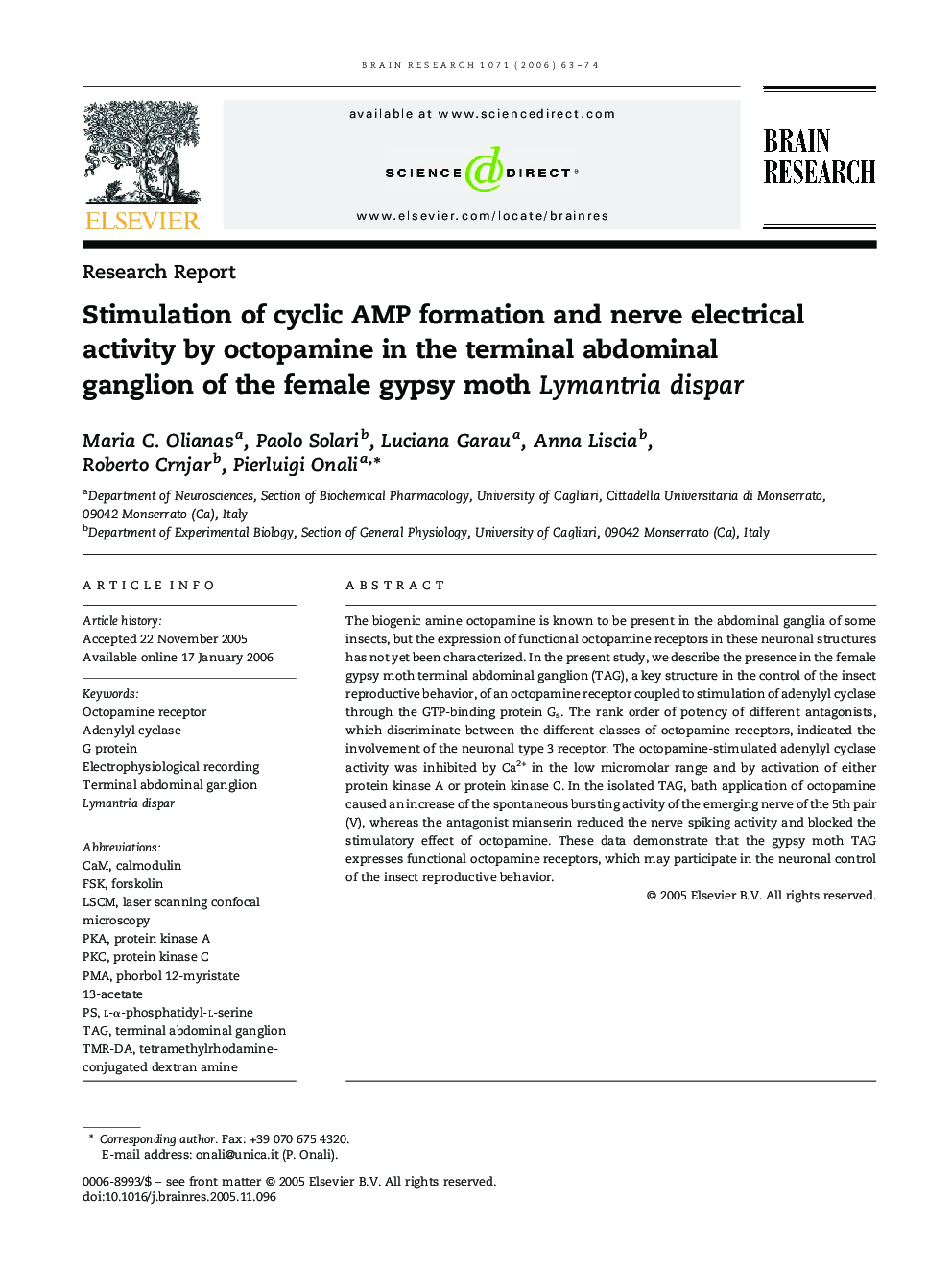| Article ID | Journal | Published Year | Pages | File Type |
|---|---|---|---|---|
| 4333389 | Brain Research | 2006 | 12 Pages |
Abstract
The biogenic amine octopamine is known to be present in the abdominal ganglia of some insects, but the expression of functional octopamine receptors in these neuronal structures has not yet been characterized. In the present study, we describe the presence in the female gypsy moth terminal abdominal ganglion (TAG), a key structure in the control of the insect reproductive behavior, of an octopamine receptor coupled to stimulation of adenylyl cyclase through the GTP-binding protein Gs. The rank order of potency of different antagonists, which discriminate between the different classes of octopamine receptors, indicated the involvement of the neuronal type 3 receptor. The octopamine-stimulated adenylyl cyclase activity was inhibited by Ca2+ in the low micromolar range and by activation of either protein kinase A or protein kinase C. In the isolated TAG, bath application of octopamine caused an increase of the spontaneous bursting activity of the emerging nerve of the 5th pair (V), whereas the antagonist mianserin reduced the nerve spiking activity and blocked the stimulatory effect of octopamine. These data demonstrate that the gypsy moth TAG expresses functional octopamine receptors, which may participate in the neuronal control of the insect reproductive behavior.
Keywords
PKCl-α-phosphatidyl-l-serineLSCMphorbol 12-myristate 13-acetateforskolinpKaLymantria disparFskPMAadenylyl cyclaseTAG یا triacylglycerols G proteinCAMElectrophysiological recordingLaser scanning confocal microscopyprotein kinase AProtein kinase CCalmodulinterminal abdominal ganglionOctopamine receptor
Related Topics
Life Sciences
Neuroscience
Neuroscience (General)
Authors
Maria C. Olianas, Paolo Solari, Luciana Garau, Anna Liscia, Roberto Crnjar, Pierluigi Onali,
